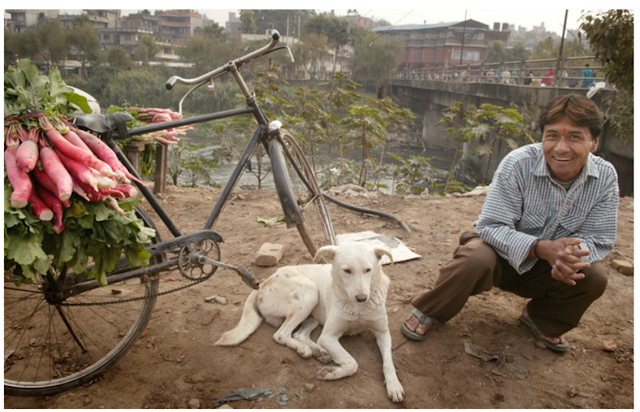In the year 2023, as we face a dry winter, hot and dry spring, and a delayed monsoon, it's crucial that we come together and take action to protect our future. The maize crops, during their critical tasselling stage, experienced irreversible wilting in the fields. Farmers are facing challenges in raising paddy nurseries. If these abnormal weather patterns persist for two or more consecutive years, the Himalayan belt is at risk of witnessing the devastating effects of desertification and the ensuing consequences. The fate of our Himalayan belt is at stake, and if we don't act now, we may witness the devastating consequences of desertification.
Photo: Alick Phiri
But amidst these adversities, there is still hope. We hold the power to make a difference, individually and collectively. Every small action counts, and together, we can create a significant impact.
There is one precautionary health tip now;
STAY AWAY FROM THE DIRECT HEAT OF THE SUN AND DRINK A LOT OF NATURAL FLUID.
Here are a few steps we can take to mitigate the effects of water scarcity and build resilience in our communities:
1) Let's be mindful of water usage in our homes. Instead of letting precious water go to waste, let's collect it from basins, bathrooms, and kitchens and use it to water the nearest plant we find. Every drop saved and every plant nurtured can contribute to a greener, more sustainable future.
2) Wherever feasible, let's harness the power of technology to uplift water from rivers and irrigate fields- regardless of who owns them. By utilizing pumps, we can ensure that our fields receive the necessary water, even in the face of water scarcity. [Communities, cooperatives and government agencies may intervene now]
3) We must adapt our farming practices to the changing climate. Let's explore the cultivation of crops that require less water or are naturally drought-tolerant. Embracing crops such as amaranth, barley,
cowpea, chickpea, dragonfruit, millet(s), oat, quinoa, sunflower, sorghum, teff, and wheat can help us build resilience and ensure a more sustainable agricultural future.
4) Let's dedicate at least one day a week to avoiding the use of any motorized vehicles that rely on (imported) fossil fuels. Instead, let's choose eco-friendly alternatives, such as walking, cycling, or using public transportation. By doing so, we can significantly reduce emissions, improve air quality, and promote a healthier lifestyle. Fossil fuels are a major contributor to climate change, and their excessive use exacerbates the challenges we face. We must strive to minimize our carbon footprint and embrace cleaner alternatives. Photo: alamy
Let's extend this mindset beyond a single day. Whenever possible, let's opt for greener modes of transportation and reduce unnecessary reliance on fossil fuel-powered vehicles. Carpooling, using electric vehicles, and promoting public transportation are additional steps we can take to reduce our carbon footprint. Together, by cutting down on our use of fossil fuels, we can create a cleaner, more sustainable environment for ourselves and future generations. Our collective actions can have a profound impact, inspiring others to follow suit and fostering a culture of environmental consciousness.
Remember, change starts with us. Each one of us has the power to make a difference, no matter how small our actions may seem. Let's come together as a community, supporting and inspiring each other along the way. By joining hands, we can overcome these challenges and create a brighter, more sustainable tomorrow.
Together, we can nurture the seeds of hope and sow the fields of resilience. Let's stand united in our commitment to safeguard our Himalayan belt and preserve the beauty and abundance of our lands.
The journey won't be easy, but I have unwavering faith in our collective strength and determination. Let's rise above the challenges, become agents of change, and inspire future generations to do the same. Together, we can create a future where the beauty of our Himalayan belt flourishes, and its people thrive.

